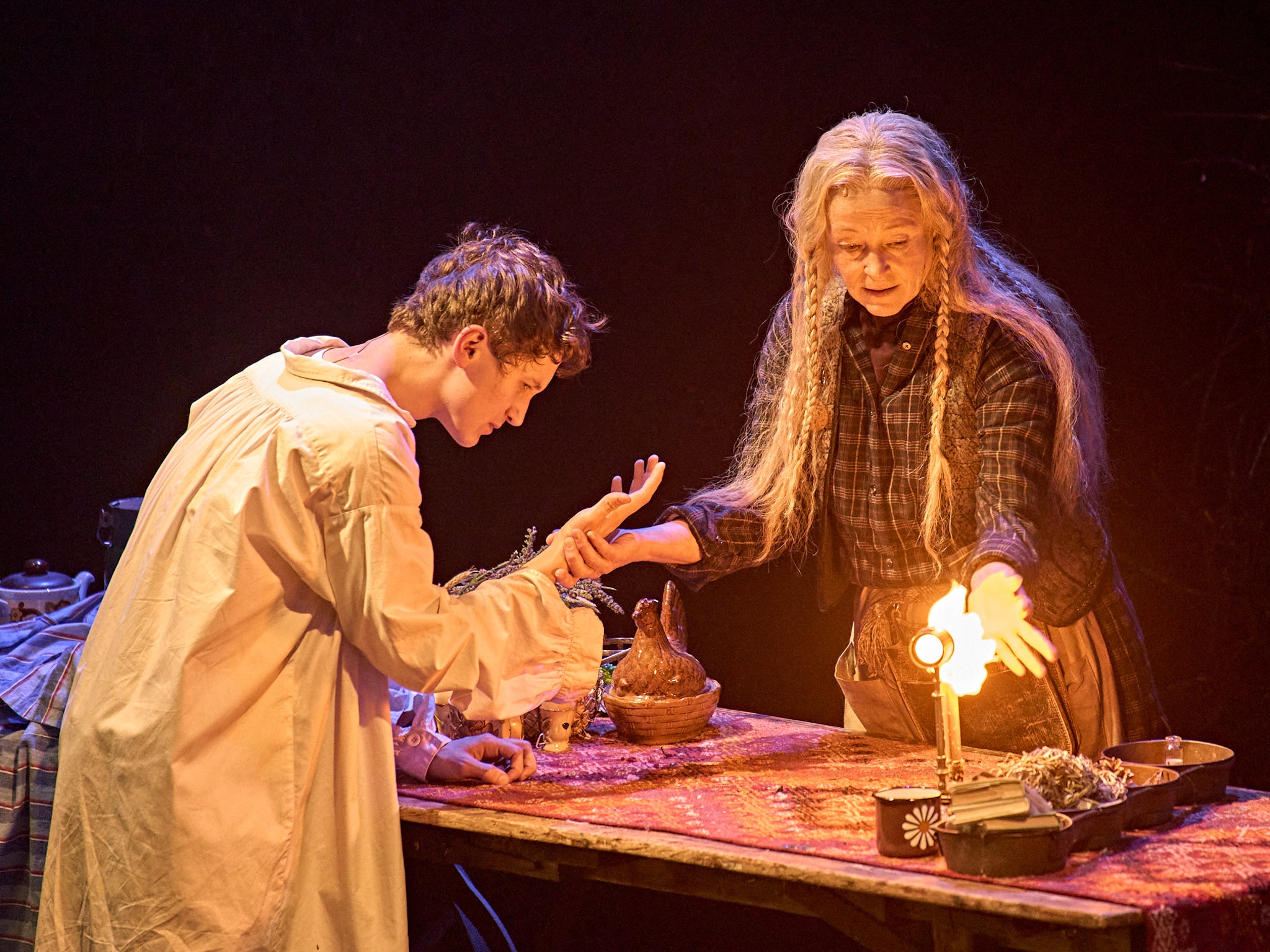The Ocean at the End of the Lane review: A thunderous, sometimes terrifying adaptation
This West End transfer, adapted from Neil Gaiman’s best-selling fantasy novel, is a magical and menacing thing

Your support helps us to tell the story
From reproductive rights to climate change to Big Tech, The Independent is on the ground when the story is developing. Whether it's investigating the financials of Elon Musk's pro-Trump PAC or producing our latest documentary, 'The A Word', which shines a light on the American women fighting for reproductive rights, we know how important it is to parse out the facts from the messaging.
At such a critical moment in US history, we need reporters on the ground. Your donation allows us to keep sending journalists to speak to both sides of the story.
The Independent is trusted by Americans across the entire political spectrum. And unlike many other quality news outlets, we choose not to lock Americans out of our reporting and analysis with paywalls. We believe quality journalism should be available to everyone, paid for by those who can afford it.
Your support makes all the difference.The beauty of Neil Gaiman’s 2013 best-selling fantasy novel, The Ocean at the End of the Lane, is its vastness. At just over 200 pages, it is both realistic and fantastical, questioning the position of adults and reminding us that our childish experiences shape who we become. His story is brought to life in Joel Horwood’s thunderous adaptation, which finds wonder even in the most unremarkable of moments.
We meet our unnamed protagonist as an adult at his father’s funeral. Accompanied by a choir-like soundscape designed by Ian Dickinson, he ambles to visit a nearby duck pond he recognises from his youth. Here he meets the mystical Old Mrs Hempstock, who is old enough to remember “when the moon was made”. With that, we are taken with him on a journey of boyish rediscovery, thrust back to a crucial time in his childhood.
While the book excels at conveying the enchantment of the supernatural realm, Katy Rudd’s direction pushes it even further. Fly Davis’s set is a constantly moving, sparky phenomenon. With the help of an ensemble dressed entirely in black, it jumps us from scene to scene rhythmically and faultlessly. Household appliances emerge from the edges, then go again just as quick, while the light-up twig forest that decorates the stage borders is a constant, eerie reminder of the darkness that is to come.
And, at times, it is genuinely terrifying. Oversized, dark-fabric puppets flip overhead and veer menacingly into the audience; a bloody, lifelike worm is removed, violently, from the boy’s skin. But the everyday horror is just as frightening. Laura Rogers’s Ursula is a perfect picture of masked evil. She seductively slips her way into the boy’s family, camouflaged by blonde curls and high heels. Helped by Steven Hoggett’s movement direction, she is both everywhere and nowhere – a scene where she appears to be behind multiple doors at once is particularly unsettling.
But it is James Bamford’s endearing portrayal of the 12-year-old hero that prevails. Lonely and awkward, he is older than the child in Gaiman’s book but keeps the same sense of naivety. A geeky lover of science and the fantasy novel favourites, like CS Lewis’s Narnia series, he woos us with his heartbreaking tales of unattended birthday parties and unspoken grief for his dead mother. As he forms a friendship with the enchanting Lettie Hempstock (Nia Towle), their charm is palpable.
First performed at the Dorfman Theatre at the National Theatre in 2019, this West End transfer manages to keep the magic of the intimate original and transform it to fit a larger space. Hauntingly memorable, this knockout production is theatre at its best.
At the Duke of York’s Theatre, London, until 14 May



Join our commenting forum
Join thought-provoking conversations, follow other Independent readers and see their replies
Comments